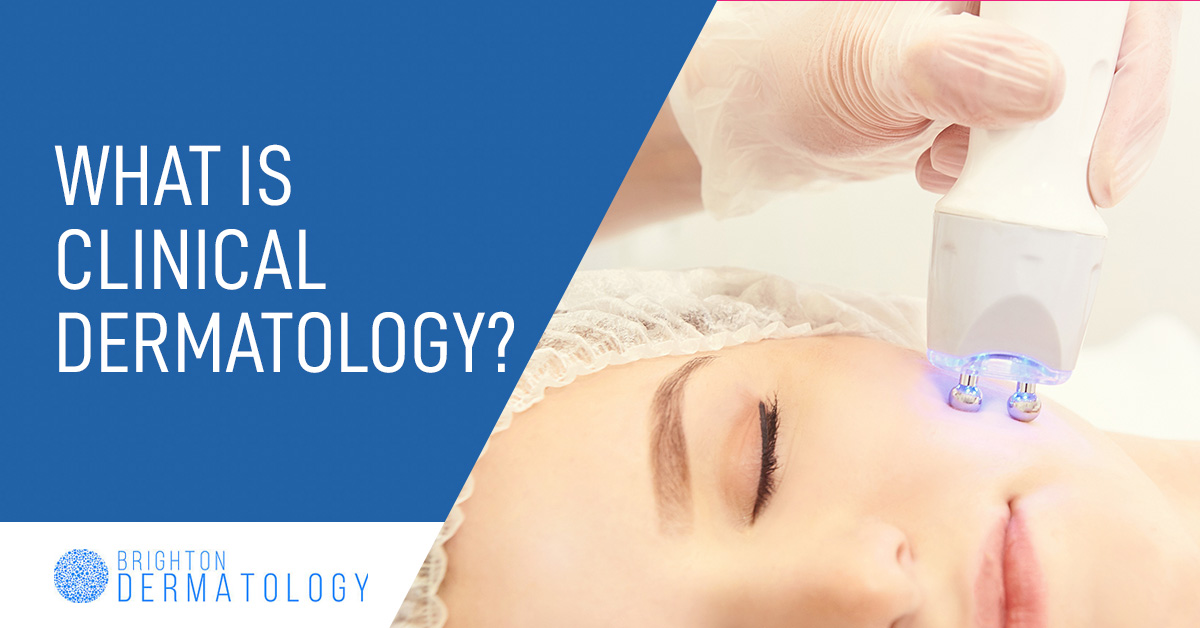Blog
What Is Clinical Dermatology?

Dermatology deals with the skin, hair, and nails of an individual.
In fact, clinical dermatology is a speciality of medicine that consists of a complete range of diseases and conditions of the hair, nails, and skin of the patient.
Dermatologists are professionals who evaluate and treat patients suffering from malignant and benign disorders affecting these external areas of the body.
Clinical dermatologists are experts in the medical and surgical treatment of patients who suffer from various skin, nails, and hair conditions and diseases.
This article highlights some of the common conditions and diseases treated by clinical dermatologists.
- Canker sores
- Dermatitis
- Melanoma
- Psoriasis
- Wrinkles
Canker Sores
Canker sores develop in the mouth. In fact, they are small and shallow lesions that start at the base of the gums and on the soft tissues of the mouth.
Canker sores are not contagious like cold sores. Canker sores can make eating and talking difficult and painful at times.
Most of the time, canker sores will vanish on its own within one or two weeks.
You should check with your health care provider or dentist if there are large sores that don’t seem to go away easily.
Canker sores are normally oval or round with a red border and white or yellow centre. There are minor and major canker sores.
Dermatitis
Dermatitis is considered the inflammation of your skin. The condition involves an itchy rash on reddened and swollen skin.
When the skin is affected by this condition, it can ooze, blister and develop a crust. Eczema or atopic dermatitis is a common example of dermatitis.
Although the condition isn’t contagious, it can make a person uncomfortable and self-conscious.
Self-care and the right medications are important to treat this condition for good. Make sure you see a dermatologist if the condition persists.
Melanoma
Melanoma is a serious skin cancer that develops in the skin cells that produce melanin. Melanin is a pigment that gives your skin its colour.
The pigment is produced by melanocytes.
Although the exact cause of this condition isn’t clear, many dermatologists believe that exposure to ultraviolet or UV rays from the sunlight and tanning lamps to play a big part in this regard.
The risk of melanoma increases with ageing. People who are over 40 years of age – especially women – are at an increased risk for this condition.
Some of the common symptoms of melanoma include:
- Unusual looking growth of the skin
- Development of new pigmented skin cells
- A change in an existing mole
Psoriasis
This condition speeds up the lifecycle of the skin cells. New cells build up rapidly on the surface of the skin.
These extra cells will form red patches and scales that are painful and itchy at times. Psoriasis is a chronic condition that comes and goes at times.
Treating the condition involves stopping the skin cells from growing so rapidly.
Although there isn’t a permanent cure for the condition, your dermatologist will help manage the condition.
Wrinkles
Wrinkles are a natural part of the ageing process. The condition is common on sun-exposed skin like the face, neck, forearms, and hands.
Wrinkles form lines and creases on the skin. You should see a qualified clinical dermatologist if you are worried about the appearance of wrinkles on your skin.
A good clinical dermatologist will recommend an effective treatment for your condition.
Searching for and finding a trustworthy dermatologist in Melbourne isn’t easy.
However, if you need to seek advice from a trusted and experienced dermatologist, look no further than Brighton Dermatology.
We are able to deal with a large range of skin diseases and disorders and help you to restore your health and confidence.
Please call us today for a consultation on (03) 9592 7474.

